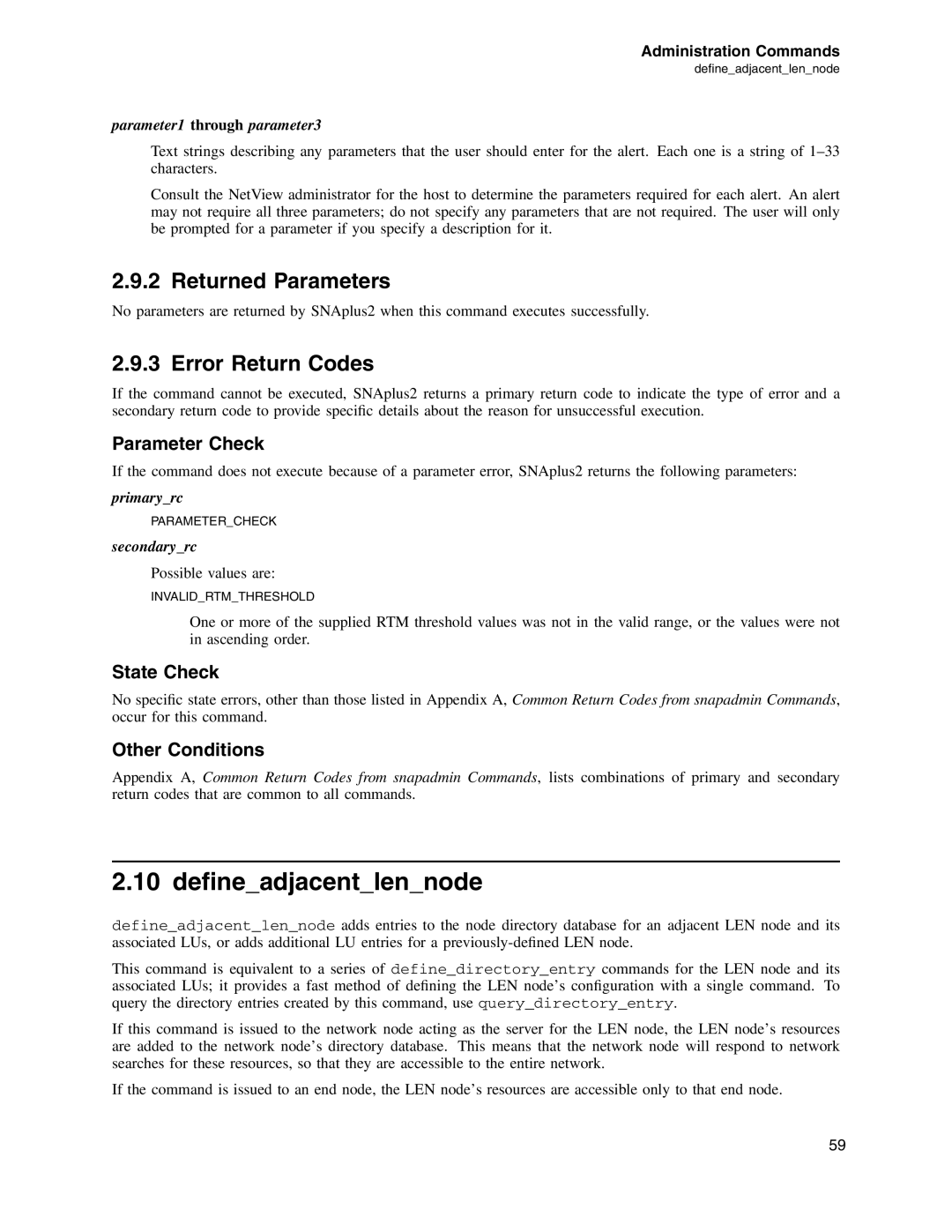Administration Commands
define_adjacent_len_node
parameter1 through parameter3
Text strings describing any parameters that the user should enter for the alert. Each one is a string of
Consult the NetView administrator for the host to determine the parameters required for each alert. An alert may not require all three parameters; do not specify any parameters that are not required. The user will only be prompted for a parameter if you specify a description for it.
2.9.2 Returned Parameters
No parameters are returned by SNAplus2 when this command executes successfully.
2.9.3 Error Return Codes
If the command cannot be executed, SNAplus2 returns a primary return code to indicate the type of error and a secondary return code to provide specific details about the reason for unsuccessful execution.
Parameter Check
If the command does not execute because of a parameter error, SNAplus2 returns the following parameters:
primary_rc
PARAMETER_CHECK
secondary_rc
Possible values are:
INVALID_RTM_THRESHOLD
One or more of the supplied RTM threshold values was not in the valid range, or the values were not in ascending order.
State Check
No specific state errors, other than those listed in Appendix A, Common Return Codes from snapadmin Commands, occur for this command.
Other Conditions
Appendix A, Common Return Codes from snapadmin Commands, lists combinations of primary and secondary return codes that are common to all commands.
2.10 define_adjacent_len_node
define_adjacent_len_node adds entries to the node directory database for an adjacent LEN node and its associated LUs, or adds additional LU entries for a
This command is equivalent to a series of define_directory_entry commands for the LEN node and its associated LUs; it provides a fast method of defining the LEN node’s configuration with a single command. To query the directory entries created by this command, use query_directory_entry.
If this command is issued to the network node acting as the server for the LEN node, the LEN node’s resources are added to the network node’s directory database. This means that the network node will respond to network searches for these resources, so that they are accessible to the entire network.
If the command is issued to an end node, the LEN node’s resources are accessible only to that end node.
59
